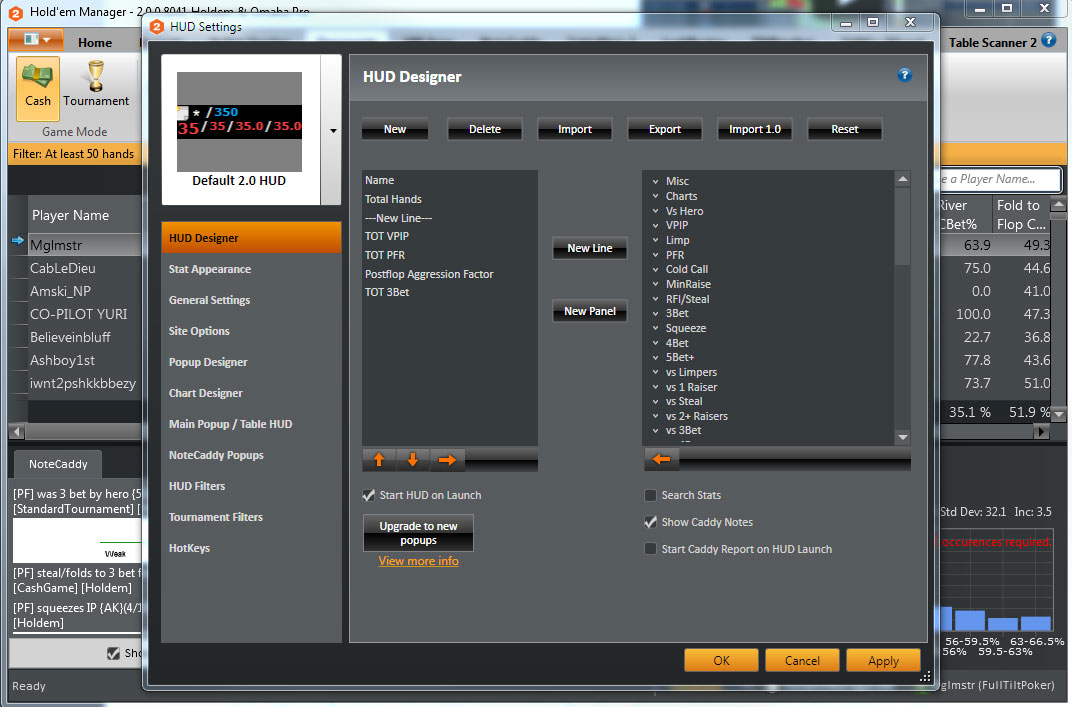
Floating the flop is often the first advanced move beginner poker players learns. It's the basic answer to the problem of frequent continuation bets that we face from our opponents.
Since cbetting is one of the simplest and most effective strategies at micro and small stakes people tend to overuse it and therefore floating the flop is a great play that will stay useful for the rest of your poker career. That's why it's so important to learn more about it and perform it correctly.
How, Why and What of Floating the Flop
Floating usually refers to calling a bet on the flop with the intention of taking down the pot on the turn. It's a basic and effective defense strategy against a continuation bet.
Almost every player mixes in a good amount of bluffs and semi-bluffs into his or her cbetting frequency and that's why we shouldn't automatically give up every time we're facing a cbet.

Example of the Flop Float Play
Let's say we are on the button with JdTd and we called an open raise from the tight aggressive player in middle position. The board comes Qd4h2s which doesn't really improve our hand but it gives us some marginal equity in the form of backdoor straight and flush draws. Villain bets a little over half pot.
Even though his preflop rangefor opening from the middle position is relatively strong, and he most likely has an overall range advantage, he's also likely to cbet this dry flop texture with a wide variety of hands. The turn brings 7 of clubs and villain elects to check.
Given the fact that most tight aggressive opponents would continue betting with all of their sets, overpairs and most likely strong queens it's safe to assume that villain's range for checking on such a dry texture is fairly weak and since we don't have any showdown value we decide to make a bet between half and two-thirds of the pot.

Timing and the Power of Position
Floating is at its most effective when we use it in head's up pots in position. If we try to make a light float on the flop in a multi-way pot the odds of us taking it down on the turn are much less favorable due to the nature of combinatorics and the way fold equity works. It's much more likely for two or more opponents to catch a piece of the flop than it is for a lone villain.
As for the issue of position, taking down the pot on the turn is much more difficult without it. We're forced to either lead bet the turn (which might be tricky to balance) or check with the hope that villain decides to check back and we'll be able to steal the pot on the river (giving away a free card in the process).

Recognizing and Punishing Dishonest Cbetting Strategies
HUD can be an invaluable tool when deciding if and how wide to float the flop. The most important stats that can help us find good spots for floating are of course cbet percentages of our opponent by street combined with showdown statistics.
The latter ones are often overlooked but they are also very important. Won Money When Saw Flop helps us establish how hard our opponent is fighting for each and every pot. If the villain has a W$WSF of 46-50% playing lightly against him might not be such a great idea. It's also far easier to take down pots on the turn against players with lower Went To Showdown %. If it's below 25% on a reasonably large sample size you should consider ramping up the aggression.
Going back to the cbet related statistics, the most important thing to pay attention to is a high flop cbet statistic (everything above 70% is perfect) and a big gap between the flop and turn cbet stats. A 70%/40% villain is practically begging to be floated with almost any two cards, but floating against a 55%/62% player will be a very unpleasant experience.
If you have large enough sample size and some experience with floating you might consider going for a double float. If the villain number two (the one with 55%/62% cbet stats) happens to continue cbetting on the river with a very low frequency you might elect to exploit that by calling both the flop and the turn light and getting aggressive on the river.

Database Analysis and Learning Away From the Table
While paying attention to stats and table dynamics during live play is very important you can also do a lot of work away from the table. Using equity calculators and scenario analyzers like Equilab of Flopzilla combined with periodical database analysis can greatly improve your understanding of post flop play and allow you to know exactly which parts of your range to float with on certain board textures against certain opponents.
In your Poker Tracker or Holdem Manager filter out all of the situations when you face a continuation bet and try to figure if you're not folding hands that could work great as a float. Using tools like Flopzilla you can see how those hands match up against your opponent's range and which turn card are the best for trying to take down the pot.

More Top Rated Content
Articles
- Limitations of a HUD
- Zoom Poker Strategy Guide
- Protect Against Malware and Hackers - Keep Your Poker Account Safe
Coaching Videos


